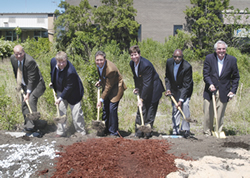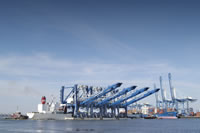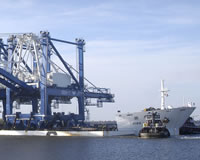To advance development of the new 280-acre marine terminal, which received federal permits in April, PB Americas has been selected to provide construction management services related to site stabilization and preparation.
The work covers contract administration, full-time inspection, quality assurance and other services related to preparing and consolidating the Port of Charleston's new terminal site. Additional construction management services will be required in the future for actual construction of the first phase of the terminal.
The SCSPA Board also approved its fiscal year 2008 financial plan, which calls for 4.5% growth in container business.
For the SCSPA's fiscal year which starts July 1, operating revenues are budgeted to increase 8.6% to $164 million, while total operating expenses will be held to a 6% increase, or $110.7 million. This is projected to drive operating earnings up 14.4% to $53.4 million.
Integral to this revenue and earnings growth is a 4.5% increase in container business, which is projected to top 1.117 million pier containers in the coming year.
The SCSPA Board also adopted a capital funding plan totaling $128.7 million in FY08 for capacity enhancements and terminal improvements. Major elements of this plan include $93 million for the new container terminal at the former Navy Base, as well as $25.4 million for container yard expansions, improvements and repairs.



